가리푸나 요리에서 코코넛 밀크의 역할
1 시간 읽음 코코넛 밀크가 hudut에서 sere에 이르는 가리푸나 요리의 풍미를 어떻게 형성하는지, 해안 기원과 준비 기법, 그리고 영양가 있고 향기로운 해산물 및 바나나 기반 요리에 담긴 문화적 의미를 탐구합니다. 10월 16, 2025 00:08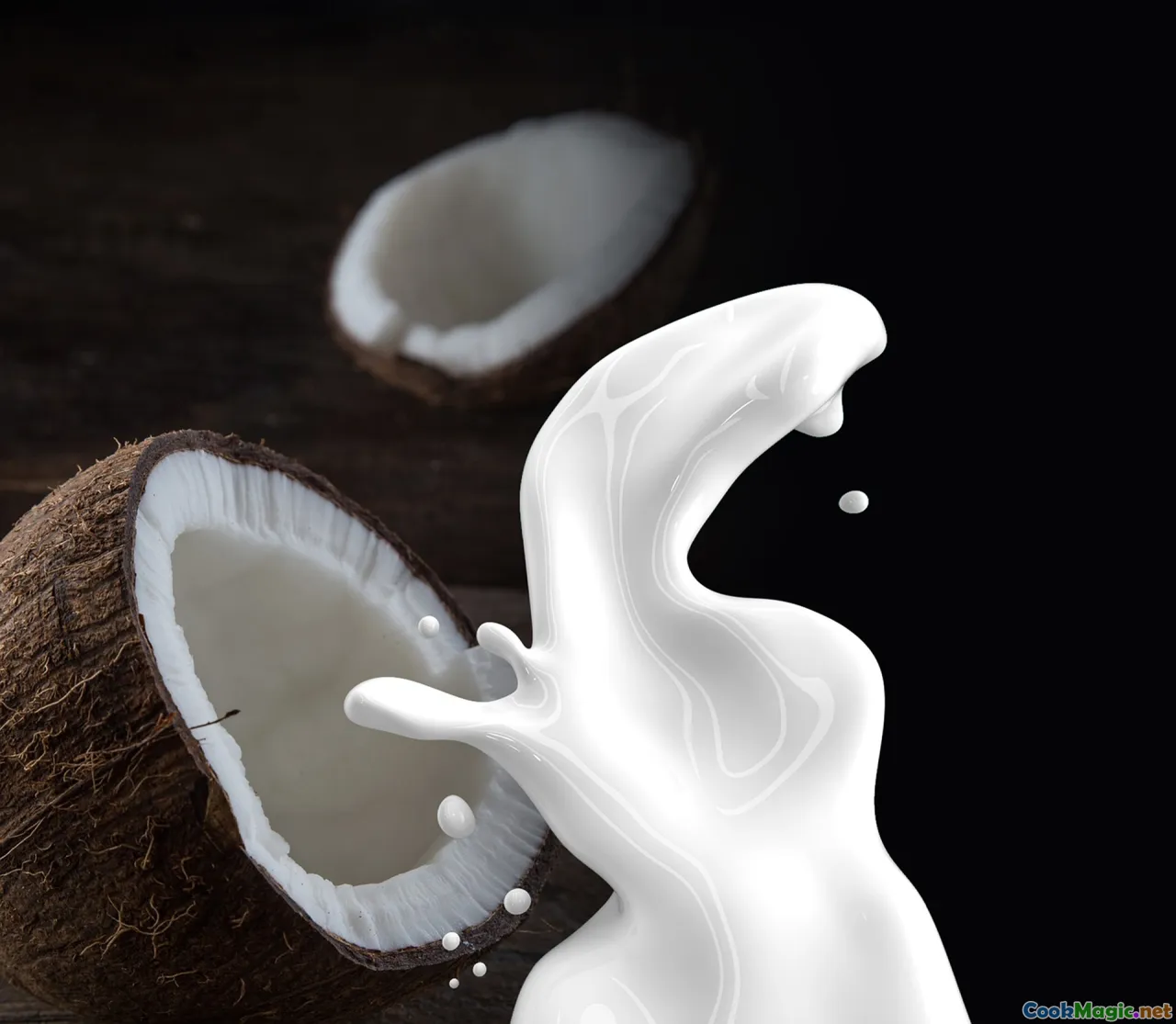
The first time you smell fresh coconut milk hitting a hot pot in a Garifuna kitchen, it rewrites your sense memory forever. -> 가리푸나 가정의 뜨거운 냄비에 신선한 코코넛 밀크 냄새가 처음 스치면, 그 냄새는 당신의 감각 기억을 영원히 바꿔 놓는다. The room fills with a lush, creamy perfume that is both sweet and sea-salted, as if the waves themselves had been milked. -> 방 안은 풍부하고 크리미한 향기로 가득 차 있는데, 달콤함과 바다의 소금기가 어울려 파도 자체를 우유 짜낸 것처럼 느껴진다. On the stove, the surface shimmers like satin. -> 가스레인지 위의 표면은 새틴처럼 반짝인다. A spoon drags through and leaves a tender wake that slowly closes, and in the next breath the aroma expands — onions going translucent, culantro bruised with the side of a knife, a habanero bobbing whole like an orange buoy. -> 숟가락이 긁어 지나가면 부드러운 흔적이 남고 천천히 가라앉는다. 이윽고 향은 확장되며 — 양파가 반투명해지고, 쿠란트로 잎은 칼등에 눌려 부드럽게 풀리며, 하바네로가 오렌지 부표처럼 통째로 떠다닌다. Outside, a drumline starts practicing for a Sunday gathering, the steady heartbeat that says: it is almost time to eat. -> 밖에서 드럼 라인이 일요일 모임을 위해 연습을 시작하고, 곧 식사가 시작될 시간임을 알리는 일정한 박동이 된다.
The Coconut Coast and the Garifuna Map

The Garifuna story stretches from volcanic St. Vincent to the Caribbean coasts of Central America. -> 가리푸나 이야기는 활화산 섬 세인트 빈센트(St. Vincent)에서 중앙아메리카 카리브해 해안까지 뻗어 있다. After exile in 1797, Garinagu — the plural of Garifuna — were set ashore on Roatán and spread along the littoral in rhythm with the tides. -> 1797년의 추방 이후 Garinagu — Garifuna의 복수형 — 는 로아탄에 상륙한 채 조수의 박자에 맞춰 해안선을 따라 퍼져 나갔다. Today, you find their villages tucked into the green: Sambo Creek and Corozal near La Ceiba in Honduras; Trujillo farther east; Dangriga, Hopkins, and Seine Bight along Belize’s south; Livingston — La Buga — where Guatemala’s Río Dulce exhales into the sea; and smaller communities in Nicaragua’s Pearl Lagoon basin, like Orinoco. -> 오늘날 그들의 마을은 초록 속에 숨은 듯 자리 잡고 있다: 온두라스의 라 세이바 근처 Sambo Creek와 Corozal; 더 동쪽의 Trujillo; 벨리즈 남부의 Dangriga, Hopkins, Seine Bight; Livingston — La Buga —에서 과테말라의 Río Dulce가 바다로 숨을 내쉬며 연결되고, 니카라과의 Pearl Lagoon 분지의 Orinoco 같은 작은 공동체들이 있다.
In all these places, coconut trees fringe the horizon like a living fence. -> 이 모든 곳에서 코코넛 나무가 수평선을 살아 있는 울타리처럼 두르고 있다. Coconuts offered shade, oil, fiber, and — most essential to the pot — milk. -> 코코넛은 그늘과 기름, 섬유를 제공했고, 냄비에 가장 중요한 밀크를 제공합니다. The Garifuna pantry stabilized around what the coast gave generously: cassava for bread, plantains and green bananas for bulk, fish and shellfish for protein, and coconut milk for the medium that held it all together. -> 가리푸나의 식재료 창고는 해안이 아낌없이 주는 것들로 안정적으로 구성되었다: 빵용 카사바, 플랜테인과 초록 바나나로 식량을 확보하고, 단백질원으로 생선과 조개류를, 그리고 모든 것을 하나로 묶는 매개체인 코코넛 밀크를 central하게 사용했다. When you meet an elder who remembers wartime rationing or hurricane recovery, their voice softens at the memory of cracking coconuts after a storm, finding the food already stored by the tree, sealed and tender. -> 전시 시절 배급이나 허리케인 복구를 기억하는 노인을 만나면, 그들은 폭풍 뒤 코코넛을 깨던 기억에 목소리가 부드러워지며, 나무가 이미 저장해 둔 음식을 찾아냈고, 그것이 봉인되고 부드럽게 남아 있던 것을 떠올린다.
What Coconut Milk Means in a Garifuna Kitchen
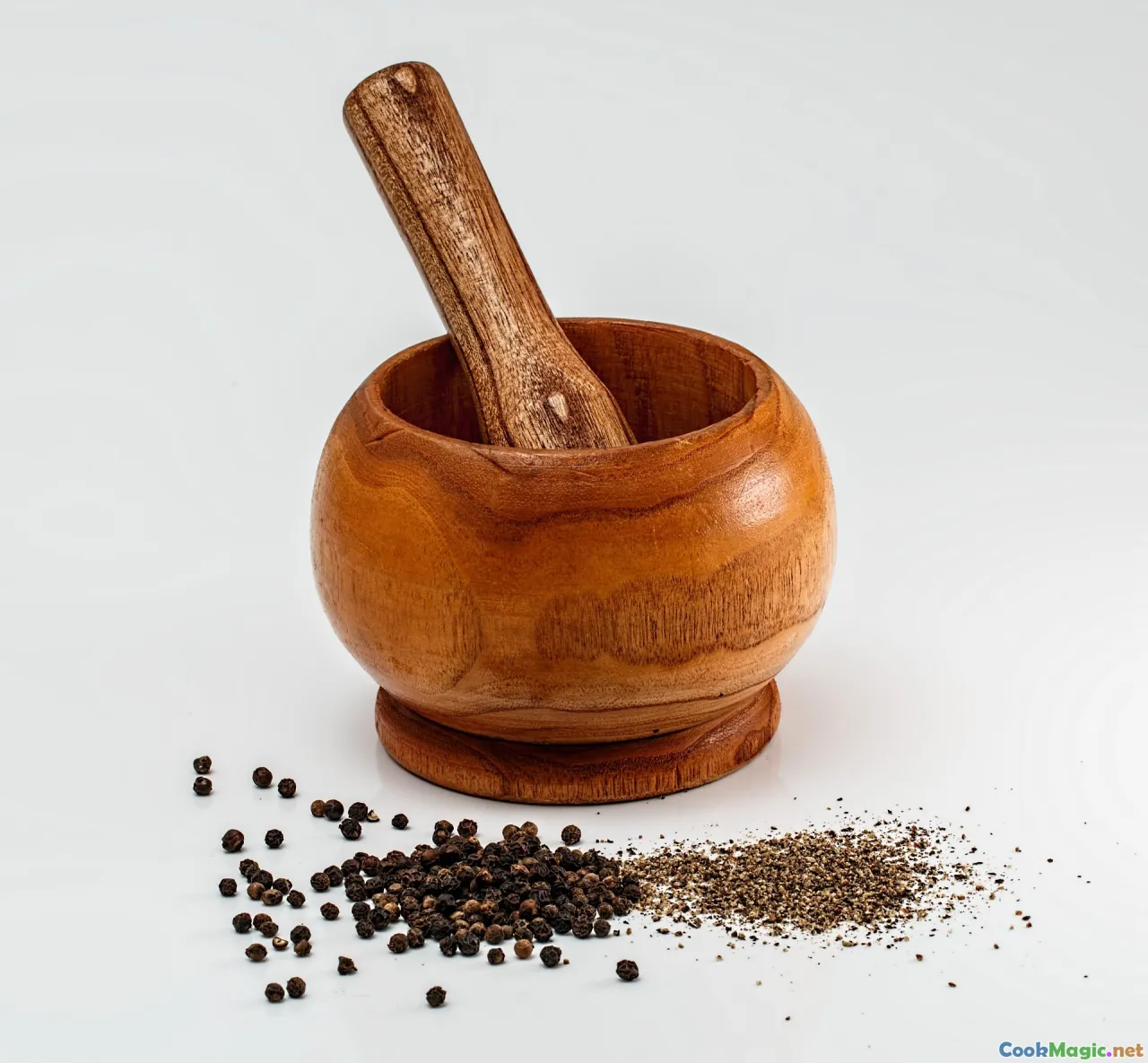
Coconut milk is not merely an ingredient; it is a way of shaping flavor and texture that matches the coastline. -> 코코넛 밀크는 단순한 재료가 아니다; 해안선을 따라 형성되는 맛과 질감을 다듬는 하나의 방식이다. It softens hard root vegetables into velvet, cradles fish in a sauce that tastes like a calmer sea, and leaves a gloss that catches the sun when you tilt your spoon. -> 단단한 뿌리채소를 벨벳처럼 부드럽게 만들고, 바다를 잔잔하게 만드는 소스에 생선을 담가 주며, 숟가락을 기울일 때 햇빛을 받아 반짝이는 광택을 남긴다. It also binds people together. -> 또한 사람들을 하나로 묶는 매개체이기도 하다.
In Dangriga one Settlement Day — Belize’s November celebration of Garifuna arrival — I stood in a courtyard echoing with drumming while three generations worked around a wide pot. -> 벨리즈의 Settlement Day, 즉 가리푸나 도착을 기념하는 11월 행사 날, 나는 두드리는 드럼 소리가 울려 퍼지는 안마당에 서 있었고, 세 세대가 넓은 냄비 주위에서 함께 일했다. A niece grated coconut on a low wooden stool fitted with a circular serrated plate. -> 조카가 둥근 톱니 판이 달린 낮은 나무 의자에서 코코넛을 갈았다. An uncle cracked more brown shells by tapping along the equator with the back of a machete until the line split with a wet, resonant click. -> 삼촌은 마체테의 등으로 적도선을 따라 더 많은 갈색 껍질을 두드려 선이 젖은 공명 소리로 갈라질 때까지 갈랐다. A grandmother, whose wrists knew in their bones how much pressure translates to how much milk, wrung a cheesecloth until the first press ran rich and thick as cream. -> 손목의 뼈가 어느 압력에서 우유가 나오는지 아는 할머니가 치즈천을 쥐어 짜 첫 압에서 우유가 풍부하고 크림처럼 되도록 했다. We snuck tastes the way children snatch fudge. -> 우리는 아이들이 퍼지를 훔치듯 맛볼 수 있었다.
The pot held sere — fish stew — and the woman leading the cooking kept saying, not too fast, not too hard. -> 냄비에는 sere(생선 스튜)가 담겼고 요리를 이끄는 여자는 천천히 하라고, 너무 세게 하지 말라고 반복했다. Coconut milk requires patience. -> 코코넛 밀크에는 인내가 필요하다. Boil it too roughly and it can break; treat it tenderly and it shines. -> 너무 거칠게 끓이면 분리될 수 있고, 다정하게 다루면 빛난다. The result is the kind of food you remember like a song: righteous with pepper and herbs, sweet-edged and savory, with a satin sheen on your lips. -> 그 결과는 노래처럼 기억에 남는 요리다: 고추와 허브가 어우러진 의협적이면서도 달콤하고 짭조름한 맛이 입술에 새틴 같은 광택을 남긴다.
How Garifuna Cooks Make Coconut Milk
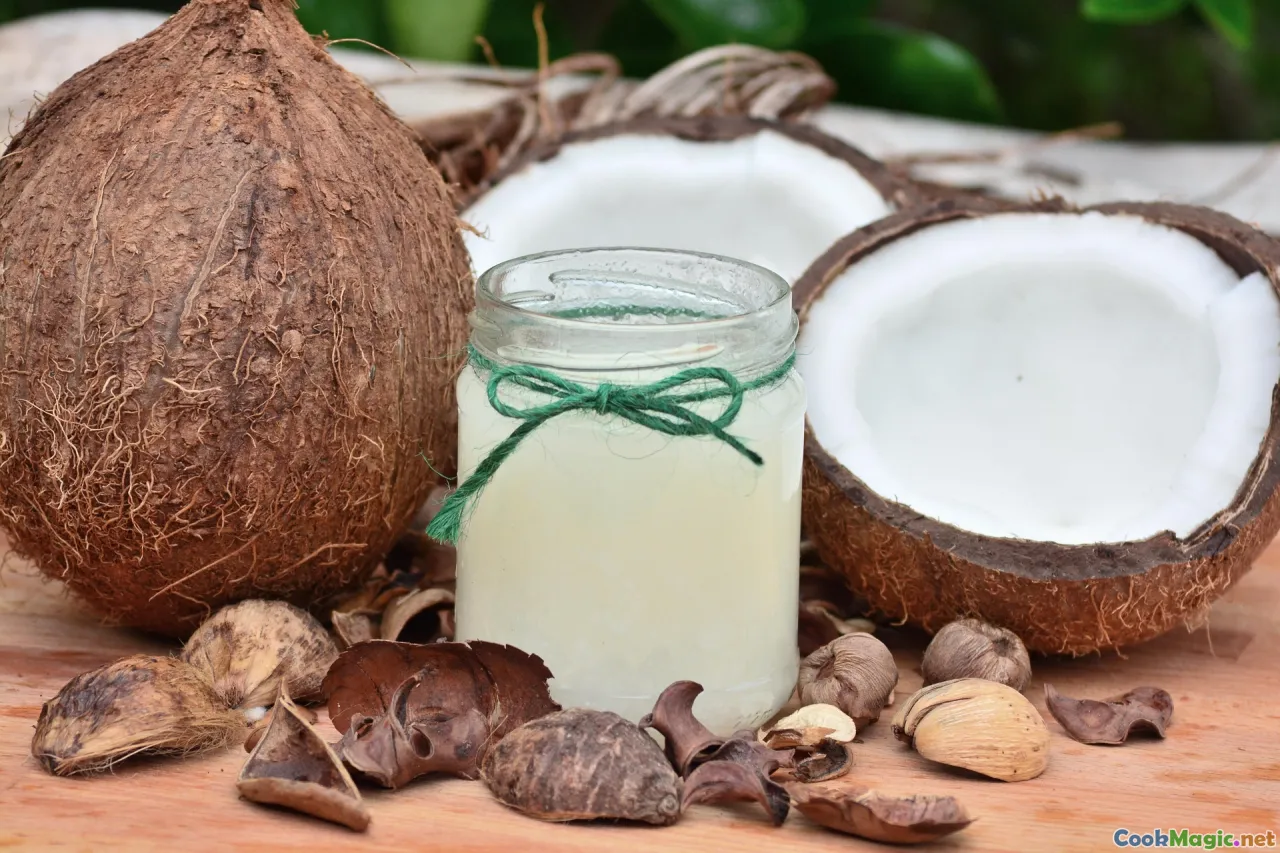
Making coconut milk in a Garifuna home is part technique, part ritual, and wholly practical. -> 가리푸나 가정에서 코코넛 밀크를 만드는 일은 기술의 일부, 의식의 일부이자 전적으로 실용적이다. The tool kit is modest: a coconut grater stool, a wide basin, clean hands, and sometimes a cloth for straining. -> 도구는 소박하다: 코코넛 갈 의자, 넓은 대야, 깨끗한 손, 그리고 때로는 체에 거를 천.
- Choose coconuts that are heavy for their size with no mold around the eyes. Shake them; a lively slosh means good water and hydrated meat. -> - 크기에 비해 무거우며 눈 주위에 곰팡이가 없는 코코넛을 고르세요. 흔들어 보세요; 활발하게 흔들리면 물이 많고 속살도 수분이 있습니다.
- Tap around the equator with the back of a sturdy knife or machete until the shell yields. Catch the water in a cup; you can sip it or use it for the first press. -> - 견고한 칼날이나 마체테의 등으로 껍질이 잘 벗겨질 때까지 적도 부위를 두드리세요. 물은 컵에 받아 두고 마시거나 첫 압착에 사용하세요.
- Slip a butter knife between meat and shell to loosen large flakes, or grate directly on the stool’s serrated plate, white curls falling like snow. -> - 육질과 껍질 사이에 버터 나이프를 넣어 큰 조각을 풀거나, 의자의 톱니판에서 직접 갈아 흰 가닥이 눈처럼 떨어지게 하세요.
- For thick milk — the prized first press — knead the grated coconut with as little liquid as possible: reserve coconut water, or warm water if needed. Scoop and clench with both hands; the liquid should flow opaque and viscous. -> - 두꺼운 밀크, 즉 귀한 첫 압착을 얻으려면 간 코코넛을 가능한 한 적은 액체와 함께 반죽하세요. 코코넛 물은 남겨 두거나 필요하면 따뜻한 물을 사용합니다. 양손으로 집어 쥐고 모으세요; 액체는 불투명하고 점도가 있어야 합니다.
- Strain through a sieve or cloth if you prefer a silkier texture. Many cooks simply skim out larger bits by hand. -> - 실크 같은 질감을 원하면 체나 천으로 걸러 주세요. 많은 요리사들은 큰 조각을 손으로 걷어내기도 한다.
- For thin milk — the second press — soak the already-pressed coconut with more warm water, knead again, and extract. This batch is lighter and ideal for simmering ingredients for longer without over-enriching the pot too soon. -> - 얇은 밀크, 두 번째 압착은 이미 압착한 코코넛에 더 따뜻한 물을 부어 다시 반죽하고 추출합니다. 이 배치는 더 가볍고, 재료를 오래 끓여도 냄비를 지나치게 풍부하게 만들지 않는 데 이상적이다.
Scale is intuitive. -> 양은 직관적이다. For a family pot of stew, three mature coconuts usually suffice; for a big gathering, the stoop becomes a station and the grater a metronome. -> 가정용 스튜 냄비의 경우 보통 잘 익은 코코넛 3개면 충분하고, 큰 모임에서는 작업대가 하나의 구역이 되고 강판이 박자맞춤의 역할을 한다. The first press gives you the voice of the coconut; the second press gives you its length of note. -> 첫 압착은 코코넛의 목소리를 주고, 두 번째 압착은 음의 길이를 준다.
Thick, Thin, and In Between: Choosing the Right Press
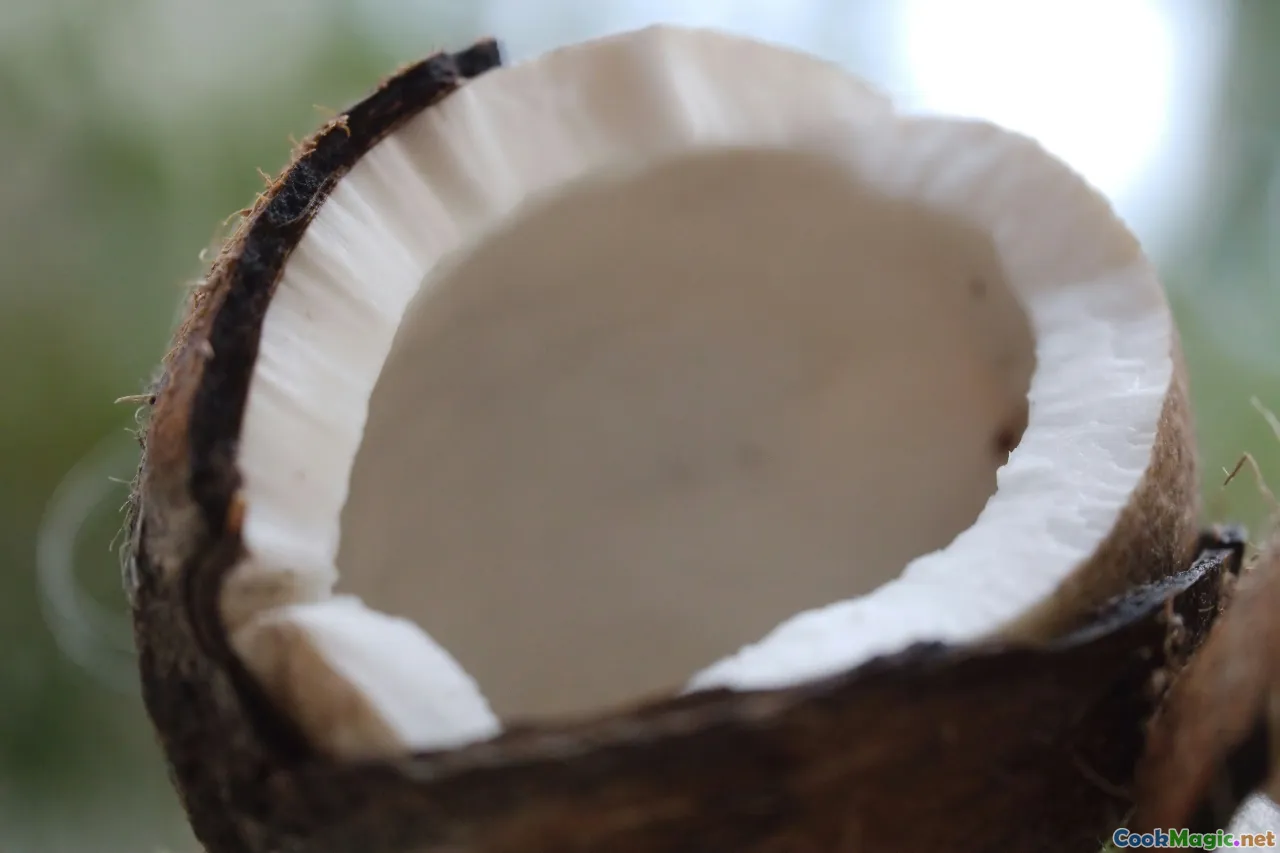
Western recipes often divide coconut into cream and milk, or worse, light milk from a can. -> 서양식 레시피는 종종 코코넛을 크림과 밀크로 나누거나, 더 나쁘면 캔에 든 연한 우유로 판단하곤 한다. In a Garifuna pot the nuance is tactile and timed. -> 가리푸나 냄비에서 그 뉘앙스는 촉각과 시간에 의해 결정된다. First press, second press, occasionally a third if the fresh nuts are particularly meaty. -> 첫 압착, 두 번째 압착, 경우에 따라 세 번째 압착도 필요할 수 있다.
- First press: Deep white, glossy, spoon-coating. Think finishing sauce, quick-cooking fish, final addition to soup. It curdles if treated roughly but rewards gentle heat with a dreamy sheen. -> - 첫 압착: 진한 흰색, 광택 있고 숟가락에 코팅되는 질감. 마무리 소스나 빠르게 조리되는 생선, 수프의 마지막 첨가를 생각하라. 다루기가 거칠면 응고되지만, 부드러운 열에는 꿈같은 광택을 준다.
- Second press: Still milky but more translucent. Perfect for the initial simmer that softens plantains, yuca, or green bananas. It can roll at a higher simmer without breaking. -> - 두 번째 압착: 여전히 밀크 같지만 더 투명하다. 플랜테인, 야카, 초록 바나나를 부드럽게 하는 초기 시뮬에 이상적이다. 끓임을 높여도 분리되거나 흐트러지지 않는다.
- Combination: Start with second press to cook the bulk; finish with first press to paint the dish with richness. -> - 조합: 대량을 조리하기 위해 먼저 두 번째 압착으로 시작하고, 풍미를 더하기 위해 마지막에 첫 번째 압착으로 마무리한다.
In practical terms, this means cooking plantains and yuca in thin milk until just yielding, then sliding in the fish and pouring in thick milk moments before you turn off the flame. -> 실용적으로는 플랜테인과 야카를 얇은 밀크에 살짝 익을 정도로 조리한 뒤, 생선을 넣고 불을 끄기 직전에 두꺼운 밀크를 부으면 된다. The difference on your tongue is obvious: clarity in the body of the dish, opulence on the surface. -> 혀로 느껴지는 차이는 뚜렷하다: 요리의 본체는 투명하고 표면은 풍성하다.
Hudut with Sere: A Cook-Along

Hudut is the pounded plantain half of the duet; sere is the coconut fish stew that answers it. In Honduras many also say machuca for the same buttery mash. -> Hudut은 듀엣의 으깬 플랜테인 부분이고, sere는 그에 응답하는 코코넛 생선 스튜다. 온두라스에서는 같은 버터리한 으깸을 machuca라고 부르는 경우도 많다. It is an ideal dish for learning coconut milk’s role because every decision — when to add, how long to simmer, how to season — shows up in the bowl. -> 코코넛 밀크의 역할을 배우기에 이상적은 요리로, 언제 더하고, 얼마나 오래 끓이며, 어떻게 양념할지 모든 선택이 그릇에 고스란히 나타난다.
Hudut, the mash:
- Choose a mix of very green and very ripe plantains. The green ones bring starch and structure; the ripe ones bring sweetness and perfume. A common ratio is two green to one ripe per person, but let your palate lead. -> Hudut의 으깸: 매우 초록빛과 아주 잘 익은 플랜테인을 섞어 고르세요. 초록 플랜테인은 전분과 구조를 주고, 잘 익은 플랜테인은 단맛과 향을 줍니다. 일반적인 비율은 사람당 초록 2개에 익은 1개이지만, 입맛에 맞춰 조정하세요.
- Cut into chunks, slide into salted water, and simmer until tender. If the water tastes pleasantly seasoned, the mash will too. -> 덩어리로 자르고 소금물에 담가 부드러워질 때까지 끓이세요. 물맛이 상쾌하게 간이 되었다면 으깬 것도 그럴 것이다.
- Transfer to a mortar, traditionally a long wooden one that allows rhythmic pounding. In small kitchens, a sturdy bowl and potato masher work. Add a splash of coconut milk or a knob of coconut oil if the mash feels dry. Pound until cohesive but still textured. You are aiming for a dough that yields but doesn’t slump. -> 절구로 옮겨 담아요; 전통적으로 리드미컬한 두드림이 가능한 긴 나무 절굿대가 있다. 작은 주방에서는 견고한 그릇과 감자 으깸으로도 가능하다. 마르지 않게 코코넛 밀크를 살짝 넣거나 코코넛 오일을 넣어도 좋다. 질감이 서로 붙어 단단하게 되되 질감은 남아 있어야 한다. 퍼지는 반죽이 되지 않도록 반죽을 치댄다.
Sere, the stew:
- Use fresh fish with firm flesh — snapper, snook, kingfish, or jack are common along the coast. Clean, rinse, and pat dry. Season with salt, black pepper, and a squeeze of lime or bitter orange. Let it sit for a few minutes. -> sere의 생선: 살이 단단한 신선한 생선을 사용합니다 — 해안가에서 흔한 스내퍼, 스눅, 킹피시, 자크 등. 손질하고 씻어 물기를 닦아낸 뒤, 소금, 후추, 라임이나 비터 오렌지 즙을 살짝 넣어 간을 하고 몇 분간 두세요.
- Sweat onion and sweet pepper in a little coconut oil until translucent, stirring in minced garlic and chopped culantro near the end so it doesn’t blacken. A few sprigs of thyme can join. -> 양파와 달콤한 피망을 코코넛 오일에 살짝 볶아 반투명해지게 하고, 끝무렵 다진 마늘과 잘게 다진 쿠란트로를 넣어 타지 않게 저어 주세요. 타임 몇 줄기도 함께 들어가도 된다.
- Pour in second-press coconut milk to cover and slip in chunks of green plantain or yuca if you want more body. Add a whole habanero or two — uncut — so it perfumes without blowing out the heat. Bring to a lazy simmer; stir occasionally as the plantain starches slip into the milk and thicken it slightly. -> 표면을 덮도록 두 번째 압착 코코넛 밀크를 붓고, 더 묵직한 질감을 원하면 초록 플랜테인이나 야카 조각을 넣으세요. 매운 향을 내되 맵지 않게 하기 위해 통째로 하바네로 한두 개를 더해도 좋습니다. 느긋한 약한 불에서 끓이고 가끔 저어주면 플랜테인의 전분이 밀크에 스며들며 조금 걸쭉해진다.
- When your vegetables are nearly tender, lay in the fish, skin side down if fillets, or as steaks. Keep the heat gentle so the milk shivers but doesn’t roil. Cover. -> 야채가 거의 익으면 생선을 넣으되 껍질이 아래로 향하게 하거나 스테이크처럼 올려 놓으세요. 불은 약하게 유지해 밀크가 떨리되 끓지 않게 하며 덮어 두세요.
- After the fish just turns opaque and flakes, swirl in first-press coconut milk. Taste for salt. Remove the whole peppers. If you like, rub a little achiote in oil and trickle that sunset color across the surface. -> 생선이 불투명해져 조각지기 시작하면 첫 압착 코코넛 밀크를 휘저어 넣고 소금으로 간을 맞추세요. 통째로 넣은 고추를 제거합니다. 원하면 아치오트를 기름에 살짝 풀어 표면에 노을빛 색을 내 주세요.
Serve the sere with a warm mound of hudut. Eat with your hands if you can, pinching off pieces of the mash and dipping them into the sauce, catching flaked fish along the way. -> Sere를 따뜻한 hudut 더미와 함께 내고 가능하면 손으로 먹으세요. 으깬 부분을 집어 소스에 찍어 먹으며 가끔 부서진 생선을 함께 받아들입니다. The texture contrast — satiny sauce, delicate fish, and elastic plantain — is a study in balance. The trick is restraint: if the pot boils hard after you add the first press, the fat can break and separate. It will still taste good, but you will have lost the silk that makes the dish Garifuna. -> 질감의 대비(새틴 같은 소스, 섬세한 생선, 탄력 있는 플랜테인)는 균형의 연구다. 비결은 절제다. 첫 압착을 넣고 냄비가 강하게 끓으면 지방이 분리될 수 있다. 맛은 여전히 좋지만, 이 요리를 가리푸나로 만드는 실크를 잃게 된다.
Bundiga: Green Banana, Smoke, and Coconut
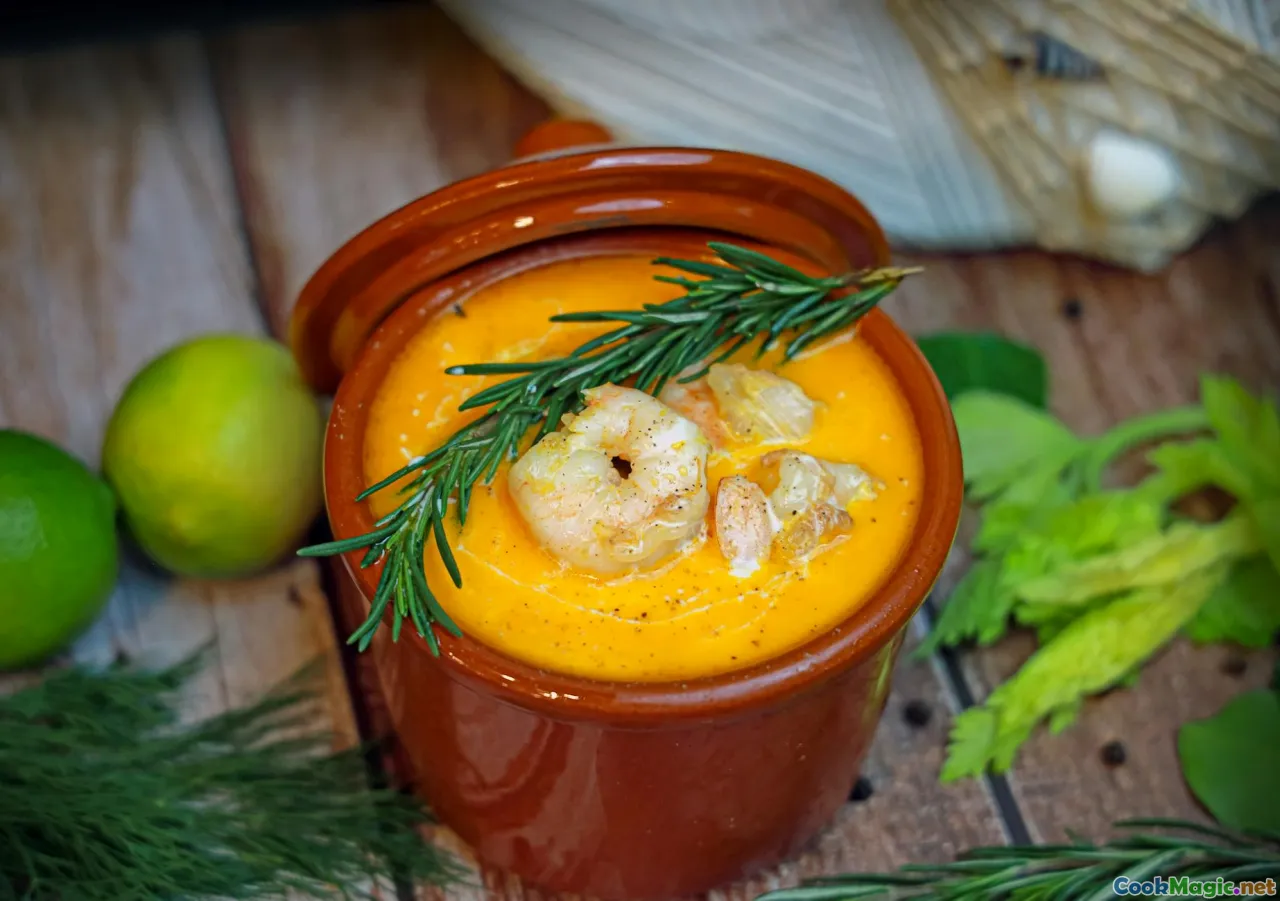
Bundiga is a soup close to my heart, a bowl that tastes like a memory of the shore. -> Bundiga는 마음에 가장 가까운 수프이자 해안의 기억을 맛보게 하는 한 그릇이다. It starts with green bananas grated fine, their sap sticky and faintly astringent, and ends in a coconut broth thickened by the fruit’s own starch. -> 그것은 아주 초록빛의 바나나를 가늘게 갈아 시작하고, 과일 자체의 전분으로 두툼해진 코코넛 육수로 마무리된다. Many families add smoked fish — the soft assertiveness of smoke tracing through the sweetness of the milk. -> 많은 가정은 훈제 생선을 더해 연기의 은은한 존재감이 우유의 달콤함을 관통하도록 한다. To make it, grate a pile of peeled green bananas into a basin of water with a squeeze of lime to keep the oxidation in check. -> 만들려면 껍질 벗긴 녹색 바나나를 물 그릇에 한 움큼 갈아 올리고 산화 방지를 위해 라임을 짜넣는다. Work quickly; the surface will brown if you dawdle. -> 빨리 작업하시오; 망설이면 표면이 갈색으로 변한다. Rinse once, then knead the shreds as you would grated cassava, squeezing out excess water. -> 한 번 헹구고, 카사바를 긁듯이 조각들을 주물러 남은 물기를 짜내시오. Drop the banana pulp into gently simmering second-press coconut milk in a wide pot, stirring so it does not clump. -> 넓은 냄비의 두 번째 압착 코코넛 밀크가 살짝 끓도록 바나나 펄프를 떨어뜨려 넣고 덩어리 지지 않게 저어 주세요. The soup should bloom to a pale, satiny thickness in minutes, like a light chowder. -> 수프는 몇 분 안에 옅은 새틴 같은 걸쭉함으로 피어오른다, 가벼운 차우더처럼. Now fold in flaked smoked fish — whatever was laid on the fire earlier in the week — along with chopped culantro and a whole pepper. -> 이제 이미 주말에 불에 올려 놓았던 훈제 생선을 잘게 부수어 넣고 다진 culantro와 통후추를 함께 넣어 저어 주세요.
This is weekday food, comforting and restorative. -> 이것은 주중의 음식으로 위로와 회복의 힘을 준다. The first spoon tastes of green fields and glowing coals, the second of ocean air. -> 첫 스푼은 푸른 들판과 타오르는 숯의 향, 두 번째는 바다의 공기다. I have eaten it out of a calabash at a roadside stand near Sambo Creek while a rain squall moved across the bay, the vendor clapping a lid onto the pot between servings to keep the perfume in. Moments later the rain stopped and the steam rising from the calabash smelled like weather clearing. -> 샘보 크릭 근처의 길가 노점에서 칼라배시 그릇에 담아 비가 바다를 가르는 동안 먹은 적이 있다. 노점상은 서빙 사이에 냄비 뚜껑을 덮어 향기를 가두었다. 잠시 후 비가 멎고 칼라배시에서 올라오는 김이 날씨가 맑아짐을 향기로 들려주었다.
Tapado Across the Coast
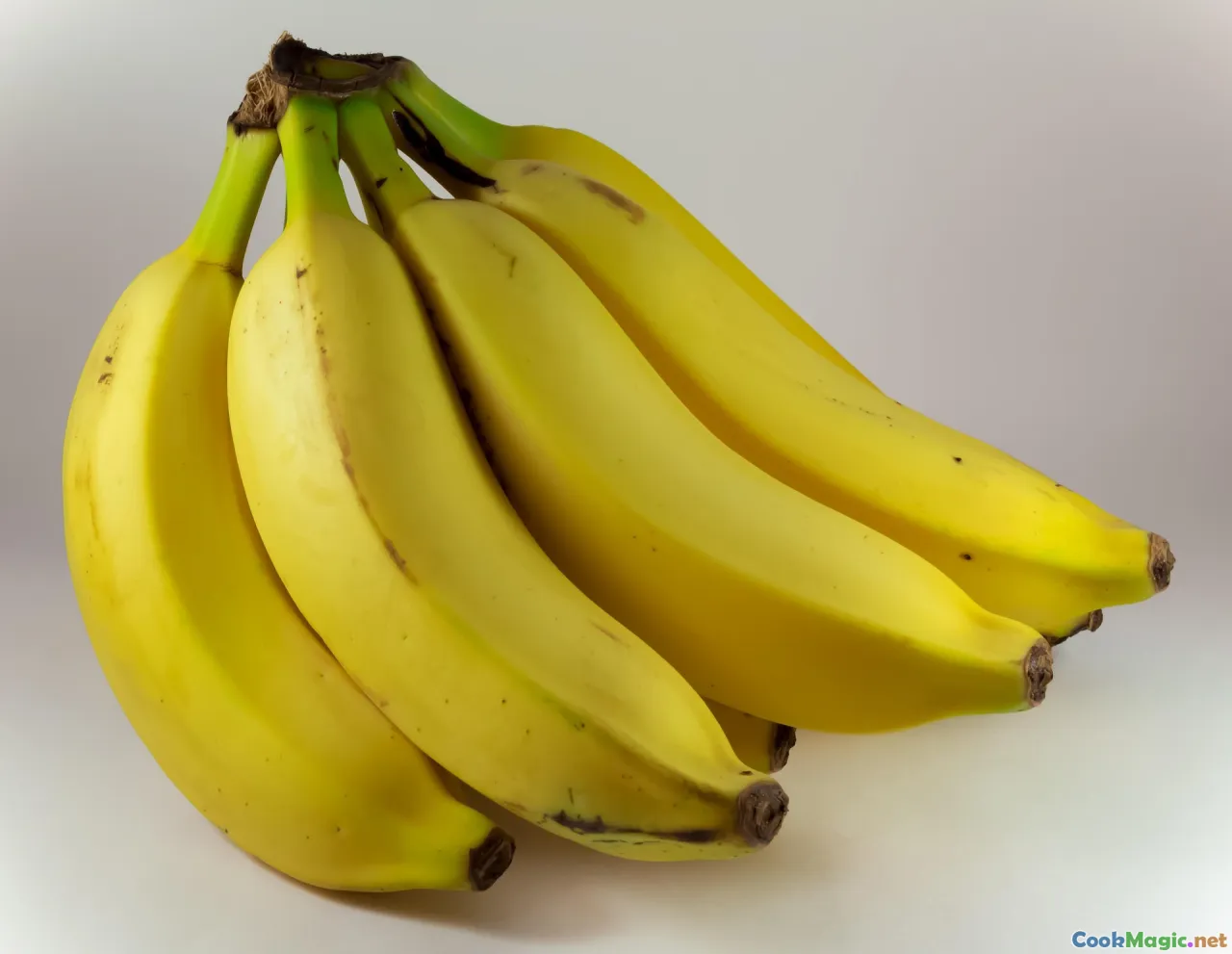
Tapado is the exuberant cousin in this family of coconut soups. -> Tapado는 코코넛 수프 가족의 활기찬 사촌이다. In Guatemala’s Livingston, pots of tapado carry the briny chorus of shrimp, crab, and sometimes lobster, with hunks of fresh fish, ripe and green plantains, and yuca sharing the stage. -> 과테말라 Livingston의 Tapado 냄비는 새우, 게, 때로는 바닷가재의 소금빛 합창과 함께 신선한 생선 조각, 잘 익은 플랜테인과 초록 바나나, 야카가 무대에 함께한다. The broth — coconut milk enriched and aromatic — often leans toward Caribbean herbs and sometimes a whisper of allspice. -> 육수는 코코넛 밀크로 풍부하고 향기롭고, 카리브 해의 허브와 때로는 올스프리스의 속삭임에 가까워 진다.
In Honduras, tapado varies from household to household. -> 온두라스에서는 Tapado가 가정마다 다르게 변한다. Some cooks anchor it with green and ripe plantain like a duet within the stew, others let breadfruit or yuca dominate when in season. -> 어떤 요리사는 녹색 플랜테인과 잘 익은 플랜테인을 한 편의 듀엣처럼 고정시키고, 어떤 이는 제철일 때 breadfruit나 야카를 주도적으로 사용한다. The broth here, too, is coconut-forward but each hand leaves a signature: more thyme in one pot, more culantro in another, a splash of rum at the end in a playful household. -> 이 육수 역시 코코넛의 풍미가 강하지만 각 집마다 특징이 남는다: 한 냄비는 타임을 더, 다른 냄비는 쿠란트로를 더하고, 마지막에 럼을 약간 첨가하는 가정이 많다. In Belize, tapado can cross over into what many simply call fish soup, the coconut base and mix of tubers steady while the protein changes with the day’s catch. -> 벨리즈에서는 Tapado가 많은 이들이 그냥 Fish Soup라고 부르는 요리로 넘어가곤 한다. 코코넛 베이스와 전분의 조합은 일정하게 유지되지만 단백질은 당일의 어획에 따라 바뀐다.
One technique thread runs through: the architecture of presses. -> 한 가지 기술 흐름이 통한다: 압착의 구조다. Start the tubers and longer-cooking shellfish in second-press milk. Slide in the fish and quick-cooking shellfish late. Crown the pot with first-press milk minutes before serving, and for generosity, sometimes a spoon of coconut oil to gloss the surface. -> 뿌리식물과 오래 끓는 조개류를 두 번째 압착 밀크로 시작하고, 생선과 빨리 익는 조개류는 나중에 넣는다. 서빙 직전에 첫 번째 압착 밀크를 얹고, 넉넉하게 맛을 내고 싶다면 표면에 코코넛 오일 한 숟가락으로 광택을 낸다. The dish arrives at the table looking like a small sunrise, gold and ivory, with plantain moons arcing through and the occasional crimson shell bright as a buoy. -> 그릇이 탁자에 놓이면 작은 해돋이를 닮았고, 금빛과 상아색이 떠오르고, 플랜테인의 달이 비치며 때때로 붉은 껍질이 부표처럼 밝다.
Everyday Coconut: Rice, Beans, and Fry Fish
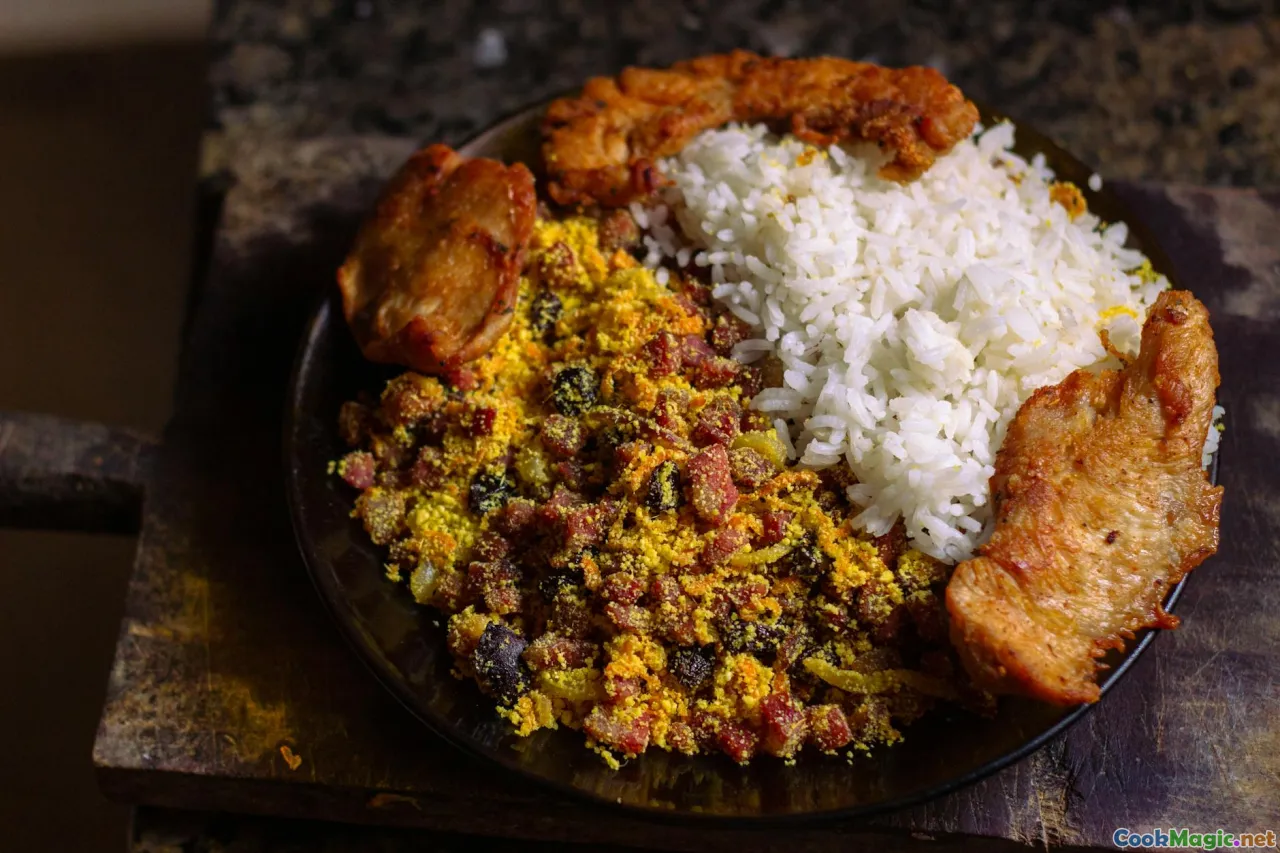
Not every day is a stew day, but coconut rarely leaves the house. -> 매일이 스튜의 날은 아니지만, 코코넛은 거의 집을 떠나지 않는다. Rice and beans in coconut milk is daily bread in many Garifuna homes. -> 코코넛 밀크 속의 쌀과 콩은 많은 가리푸나 가정의 일상 식사다. The scent alone is an invitation: a pot covered with a clean kitchen towel — to catch steam and bead it back down — the rice just long enough to hold its grain, beans tender but not blown. -> 향기만으로도 초대다: 깨끗한 주방 타월로 덮인 냄비는 김을 잡아 다시 수증기로 되돌려주고, 쌀은 알갱이가 남을 만큼만, 콩은 터지지 않게 부드럽다. A typical method:
- Rinse rice until the water runs clear. If you have time, soak for 15 minutes. -> 일반적인 방법:
- 쌀을 물이 맑아질 때까지 씻으세요. 시간이 있다면 15분 불려 두세요.
- Cook red kidney beans or small red beans with onion, garlic, and a few sprigs of thyme until tender. Keep the cooking liquid; it is a flavor trove. -> 적두콩이나 작은 붉은콩을 양파, 마늘, 타임 몇 줄기와 함께 부드러워질 때까지 끓이고, 육수를 남겨 두세요. 그것은 맛의 보물창고다.
- In a pot, combine the bean liquor with second-press coconut milk in proportions that will cook your rice. Salt to taste and add a scotch bonnet whole if you like its perfume. -> 냄비에 콩 육수와 두 번째 압착 코코넛 밀크를 쌀의 양에 맞춰 섞으세요. 간을 보고 향이 좋으면 스코치 보넷 한 개를 통째로 넣어도 좋다.
- Add rice and simmer on low without stirring too much. When craters appear and the surface looks matte, lower the heat, cover snugly, and let it finish gently. If you want richer, splash in a little first-press milk near the end, letting it steam in rather than boil. -> 쌀을 넣고 너무 저어주지 말고 약한 불에서 끓이세요. 표면에 작은 구멍이 생기고 매트해 보이면 불을 줄이고 단단히 덮어 천천히 마무리하세요. 더 풍부하게 만들고 싶다면 끝에 약간의 첫 압착 밀크를 넣고 증기로 익히되 끓이지 않게 하세요. Fish for an everyday meal might be rubbed with salt, black pepper, and a short bath of lime or bitter orange, then dredged lightly in seasoned flour and fried in coconut oil until the skin goes crackly and deep gold. -> 일상 식사의 생선은 소금, 후추, 라임이나 비터 오렌지의 짧은 침지로 간을 한 뒤, 양념가루를 살짝 입혀 코코넛 오일에 튀겨 껍질이 바삭하고 황금빛으로 변할 때까지 굽는다. The first bite sprays savory juices, the flesh moist from the quick cook, and the coconut-scented rice is there to collect the edges. -> 첫 한 입은 짭조름한 육즙을 뿜고, 재빠르게 익힌 살은 촉촉하며, 코코넛 향의 쌀이 가장자리를 모아준다.
Technique Notes: Working With Fat, Fire, and Acid

Coconut milk is an emulsion — fat and water persuaded to agree. -> 코코넛 밀크는 에멀전이다 — 지방과 물이 함께 어울리도록 설득된 상태. It follows rules that feel like personality quirks if you listen:
- Heat and agitation can break the emulsion. Keep simmer gentle, especially after adding first-press milk. -> 들으면 그 규칙은 마치 성격의 기벽처럼 느껴진다:
- 열과 교반은 에멀전을 깨뜨릴 수 있다. 첫 압착 밀크를 넣은 뒤에는 특히 불을 약하게 유지하라.
- Acid tightens milk and can curdle it. Lime juice or vinegar belongs late, and in drops, not gulps. -> - 산은 밀크를 팽팽하게 만들고 응고시킬 수 있다. 라임 주스나 식초는 나중에 조금씩 떨어뜨려 넣어라.
- Salt draws out water from coconut solids. Season gradually as the pot cooks, then adjust at the end. -> - 소금은 코코넛 고체에서 물을 끌어당긴다. 냄비가 끓는 동안 점진적으로 간을 하고 마지막에 조정하라.
- Starch is your ally. Plantains, green bananas, and yuca release starch that can stabilize the broth. -> - 전분은 당신의 동맹이다. 플랜테인, 초록 바나나, 야카는 전분을 방출해 육수를 안정시킨다.
- Oil separation at the rim is not a flaw. A little coconut oil ring is a sign of flavor; just avoid a full break into watery liquid and floating fat. -> - 가장자리에서의 기름 분리는 결점이 아니다. 작은 코코넛 오일 링은 풍미의 신호다. 다만 물 같은 액체로 완전히 분리되어 떠다니는 지방으로 완전 분리되는 일은 피하라.
Garifuna cooks often read the pot with the same focus drummers use to read a circle: when the bubbles turn from hard to soft, when the aroma shifts from raw edge to rounded sweetness, when the surface shows a velvet shiver instead of a roll. -> 가리푸나 요리사들은 원을 읽듯 냄비를 보면, 거품이 거칠게서 부드럽게 바뀔 때, 향이 날것의 모서리에서 둥근 달콤함으로 옮겨 질 때, 표면이 둥근 떨림을 보여줄 때를 본다. All these are cues to add fish, to lower heat, to finish with the good milk. -> 이 모든 것은 생선을 더하고, 불을 낮추고, 좋은 밀크로 마무리하라는 신호다.
Beyond the Garifuna Kitchen: Cousins and Contrasts

Coconut cookery ripples throughout the Caribbean basin. Stand at the edge of a Garifuna pot and you can look sideways to cousins. -> 코코넛 요리는 카리브해 분지 전역으로 파문을 일으킨다. 가리푸나 냄비의 가장자리에 서면 옆으로 형제들을 바라볼 수 있다.
- Jamaican rundown reduces coconut milk until it splits and the flavored oil fries fish or vegetables directly in it, intensely savory and sticky. Garifuna sere, by contrast, avoids full reduction; it seeks silk and balance. -> - 자메이칸 런다운은 코코넛 밀크를 완전히 분리될 때까지 줄이고, 향유가 생선이나 채소를 그 안에서 직접 튀겨 거칠고 끈적한 맛을 강하게 낸다. 반면 가리푸나 sere은 완전한 환원을 피하고 실크와 균형을 추구한다.
- Rondon — on Nicaragua’s and Costa Rica’s Caribbean coast — resembles a bountiful tapado with breadfruit, yuca, and plantains, cooked in coconut milk with fish or shellfish. The pot leans into thyme and scotch bonnet too, but the texture often runs heavier with roots. In a Garifuna kitchen, green banana starch in bundiga yields a lighter spoonfeel. -> - 니카라과와 코스타리카의 카리브 해 해안의 로톤은 빵나무, 야카, 플랜테인을 코코넛 밀크 속에 넣고 생선이나 조개와 함께 조리된 풍성한 Tapado와 닮았다. 냄비는 타임과 스코치 보넷에도 의지하지만 질감은 뿌리채소로 더 무겁게 가는 경우가 많다. 가리푸나 주방에서 번디가의 초록 바나나 전분은 더 가벼운 숟가락 감각을 만들어낸다.
- Belizean rice and beans cooked in coconut milk is beloved beyond Garifuna homes, traveling into Creole and Mestizo kitchens. But the herbs, the degree of coconut richness, and the sides that come with it signal whose hand stirred the pot. -> 벨리즈식 코코넛 밀크 쌀과 콩은 가리푸나 가정 밖에서도 사랑받아 크리올과 메스티조 요리로도 이어진다. 그러나 허브, 코코넛의 풍부함 정도, 그리고 함께 곁들여지는 재료가 냄비를 누가 저었는지의 흔적을 말해준다.
These parallels matter because they reveal a shared grammar — coconut milk plus tubers plus sea — expressed in distinct dialects. And they remind us that the coastline is a conversation, not a border. -> 이러한 평행성은 공유된 문법(코코넛 밀크+전분+바다)을 서로 다른 방언으로 표현한다는 것을 보여주기 때문에 중요하며, 해안선은 대화이며 경계가 아님을 일깨운다.
A Little Science in the Pot

Coconut milk contains fat droplets, water, and emulsifiers from the coconut’s own proteins and carbohydrates. -> 코코넛 밀크는 지방 방울, 물, 그리고 코코넛 자체의 단백질과 탄수화물에서 나온 유화제들을 포함한다. When you grate finely, you expose more cellular structure and release more emulsifiers; when you press gently, you capture a higher ratio of cream to water. Time, temperature, and pH decide whether those droplets stay suspended or merge and rise. -> 곱게 갈수록 더 많은 세포 구조가 드러나고 더 많은 유화제가 방출되며, 살짝 압착하면 크림-물의 비율이 높아진다. 시간, 온도, pH가 이 작은 방울들이 떠 있는지 합쳐 올라오는지를 결정한다.
- Temperature: Gentle heat relaxes proteins and keeps droplets mobile without slamming them together. -> - 온도: 부드러운 열은 단백질을 이완시키고 방울이 서로 부딪히지 않게 움직이게 한다.
- Boiling increases collisions and coalescence. -> - 끓임은 충돌과 합류를 증가시킨다.
- pH: Lower pH — more acidic — destabilizes emulsions. Add acids after cooking and off the heat. -> - pH: 더 낮은 pH(더 산성)일수록 에멀전은 불안정해진다. 조리 후 열을 벗어나 있을 때 산을 조금씩 추가하라.
- Salt: Electrolytes shift the balance. Add salt steadily and taste often. -> - 소금: 전해질이 균형을 바꾼다. 소금을 점진적으로 추가하고 자주 맛보라.
- Starch: Plantain and banana starch gelatinize around 70–75°C. Once swollen, starch granules help hold fat droplets in suspension, giving body without heavy reduction. -> - 전분: 플랜테인과 바나나 전분은 70–75°C 부근에서 젤라틴화된다. 팽창하면 전분 과립이 지방 방울을 떠 있게 도와주어 뚜렷한 질감을 주되 과도한 감소 없이 몸을 유지한다.
If a pot breaks slightly, all is not lost. Off the heat, whisk in a spoon of cassava starch slurry or mash a piece of plantain into the broth. The starch can bring the emulsion back together. -> 냄비가 약간 분리되더라도 모든 것이 잃어버려지는 것은 아니다. 불을 끄고 카사바 전분 슬러리 한 스푼을 휘저거나 플랜테인 한 조각을 육수에 으깬 뒤 전분이 에멀전을 다시 모이게 할 수 있다. But the wiser move is prevention: finish with first-press milk and do not boil after. -> 그러나 더 현명한 방법은 예방이다: 처음 압착 밀크로 마무리하고 끓이지 말 것.
Where to Taste It

If you want to taste coconut milk’s role in Garifuna cooking shaped by salt air and drumbeats, go where the breeze and the pots meet. -> 소금기 있는 바람과 북에 의해 형성된 가리푸나 요리에서 코코넛 밀크의 역할을 맛보고 싶다면 바람과 냄비가 만나는 곳으로 가라.
- In Dangriga, follow the smell of coconut rice through side streets to family kitchens that open for lunch. During Settlement Day, you may find hudut simmering in multiple yards, drum circles starting up, and a communal buzz that turns the whole town into a dining room. -> 댕그리가에서 코코넛 쌀 냄새를 따라 골목길을 지나 점심에 문을 여는 가족 주방으로 가세요. Settlement Day 동안에는 여러 마당에서 hudut가 끓고, 드럼 서클이 시작되며, 마을 전체를 식당으로 바꿔 놓는 공동의 소리가 들립니다.
- In Hopkins, a seaside walk puts you within scent of sere at noon. Some cultural centers offer cooking demos or pair drum lessons with a hudut workshop; it is worth asking around — hands learn faster than eyes. -> 홉킨스의 해변 산책로를 따르면 정오에 sere의 향기에 가까워집니다. 문화 센터 중 일부는 요리 시연을 열거나 드럼 수업과 hudut 워크숍을 연결하기도 하니 여러 곳에 문의해 보세요 — 손으로 배우는 것이 눈으로 보는 것보다 빨리 배우는 법입니다.
- In Livingston, boats bob at anchor while comedores line the waterfront. Tapado there tastes of river and sea combined, often presented in a bowl so full the plantains peer over the rim. Order early; fish sells out. -> 리빙스턴에서 선박은 닻에 흔들리고, comedores가 강가를 따라 늘어서 있다. 그곳의 Tapado는 강과 바다가 어우러진 맛으로, 그릇이 아주 가득 차 있어 플랜테인이 가장자리를 넘볼 정도다. 미리 주문하라; 생선은 매진될 수 있다.
- In Sambo Creek or Corozal in Honduras, look for weekend smoke. The stand with smoked fish dangling like flags probably has bundiga on the burner too, coconut softening the assertive smoke into something round and confident. -> 온두라스의 Sambo Creek나 Corozal에서 주말의 훈제 냄새를 찾아보라. 훈제 생선을 깃발처럼 매단 노점에는 번디가도 함께 올려져 있을 가능성이 크며, 코코넛이 거센 연기를 부드럽고 자신감 있게 다듬는다.
Wherever you go, ask the cook about the coconuts. You will hear stories about the best trees — the ones that yield sweeter water, the ones that shrug off storms — and you will learn how much of a place can be held inside a shell. -> 어디를 가더라도 코코넛에 대해 요리사에게 물어보라. 가장 달콤한 물을 뽑는 나무, 폭풍을 견뎌 내는 나무의 이야기를 들을 것이며 껍질 안에 얼마나 많은 공간이 담길 수 있는지 배우게 된다.
Fresh or Canned? A Practical Guide
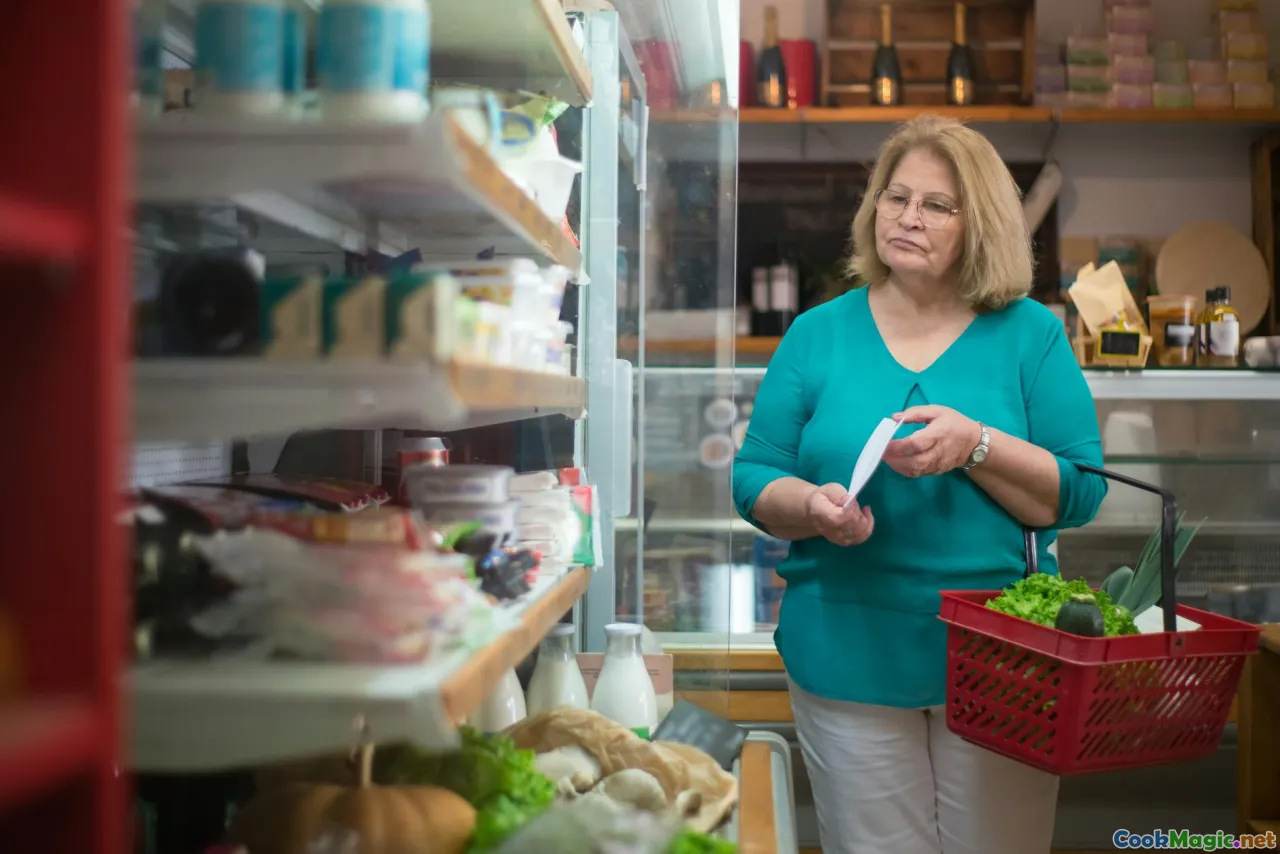
Nothing replaces fresh coconut milk for aroma and texture, but good cooks make good food with what they have. -> 향과 질감을 위한 신선한 코코넛 밀크를 대체하는 것은 없지만, 능숙한 요리사는 가진 재료로도 훌륭한 음식을 만든다. If canned is your reality, here is how to choose and use it with Garifuna intentions. -> 통조림이 현실이라면 가리푸나의 의도에 맞게 고르고 활용하는 법은 다음과 같다.
- Choose full-fat cans with short ingredient lists. Coconut and water is ideal; a little guar gum is acceptable. Avoid sweetened cans meant for drinks. -> - 성분표가 짧고 지방이 많은 통조림을 고르세요. 코코넛과 물이 이상적이며, 아주 약간의 구아 검은 허용됩니다. 음료용으로 달게 만든 것은 피하세요.
- Shake the can. If it sloshes, the emulsion is intact; if it thuds, the cream has separated, which is fine but plan to stir thoroughly. -> - 캔을 흔드세요. 흔들리면 에멀전이 유지되고, 쿵쿵 소리가 나면 크림이 분리된 것이므로 충분히 저으세요.
- For a first-press effect, chill the can, scoop the thick cream at the top, and reserve the thinner liquid for the earlier simmer. This mimics the press logic. -> - 첫 압착 효과를 위해 캔을 차게 한 뒤 위쪽의 걸쭉한 크림을 떠내고, 더 묽은 액체는 초기 끓임에 사용한다. 이것은 압착 로직을 흉내 낸다.
- Brighten canned flavor by simmering a handful of fresh grated coconut in the milk for 5 minutes, then straining. A tiny pinch of sugar can help replicate the sweetness of fresh first press. -> - 5분간 신선한 다진 코코넛을 밀크에 함께 끓여 맛을 밝힌 뒤 걸러내라. 아주 작은 양의 설탕은 신선한 첫 압착의 달콤함을 흉내 내는 데 도움이 된다.
- Coconut milk powder, reconstituted thick for finishing and thin for simmering, is a decent travel trick. -> - 코코넛 밀크 파우더를 마무리용으로 진하게, 끓임용으로는 얇게 재구성하는 것도 좋은 여행 팁이다.
Working with cans asks for gentle heat even more. Stabilizers can give you a false sense of security; they can hide a break but cannot create the perfume of fresh. Do not be shy about finishing a canned batch with a small spoon of coconut oil to add fragrance. -> 캔으로 작업할 때는 더 부드러운 열이 필요하다. 안정제는 일시적 안전감을 줄 수 있지만 분리를 숨길 수는 있어도 신선한 향을 만들 수는 없다. 캔으로 만든 배치도 마무리할 때 코코넛 오일 한 스푼으로 향을 추가하는 것을 주저하지 마라.
Morning on the Shore: A Story
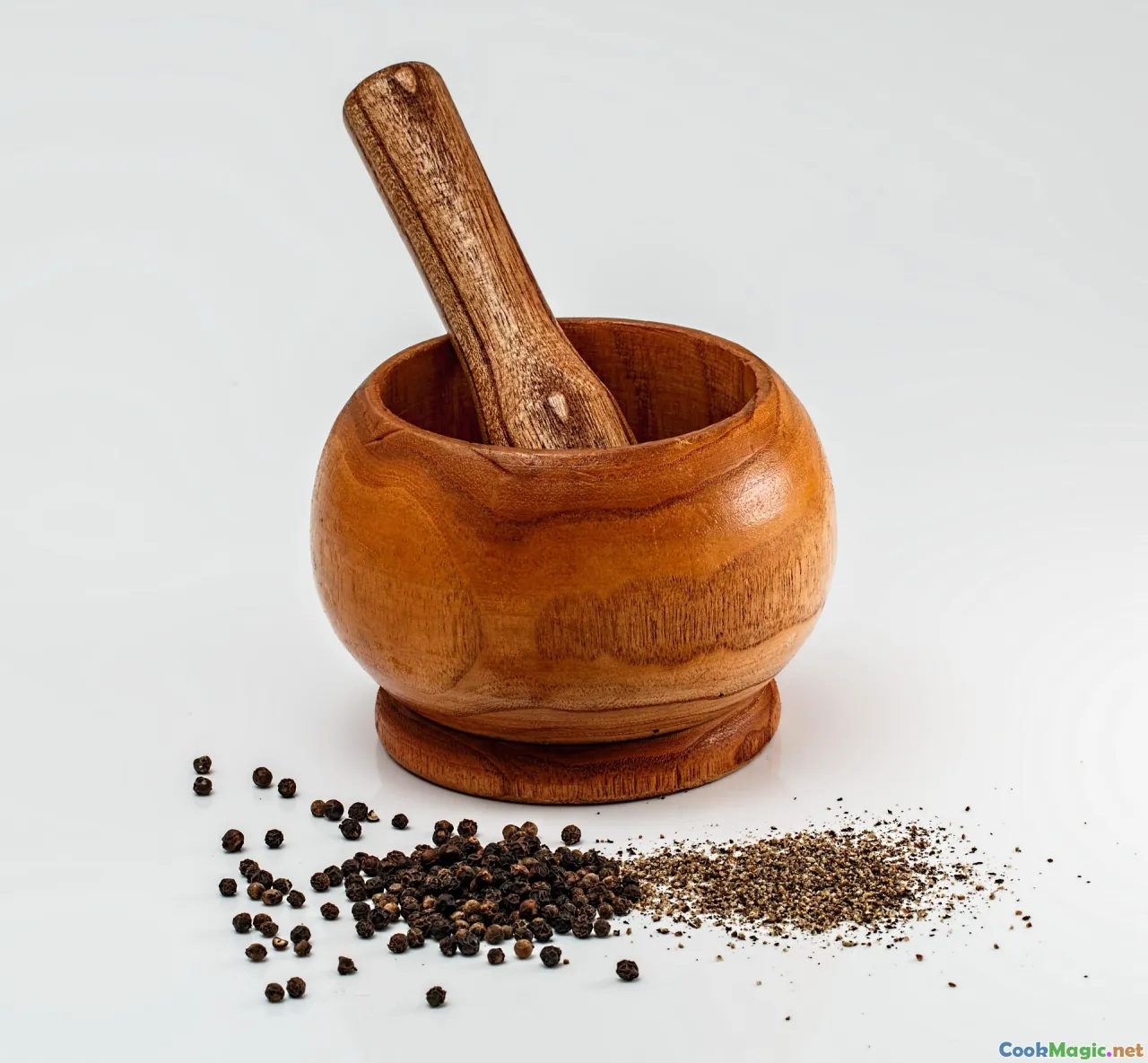
In Hopkins, the morning began slow and pink, the sea hardly breathing. -> 홉킨스의 아침은 느리고 분홍빛으로 시작했고 바다는 거의 숨을 쉬지 않았다. The neighbor’s radio murmured a paranda song; gulls stitched the horizon. -> 이웃의 라디오가 파란다의 노래를 속삭이고, 갈매기가 지평선을 꿰매듯 날랐다. I had come early to learn bundiga, and the kitchen’s windows were already beaded with humidity. -> 번디가를 배우려고 일찍 왔고, 주방 창문은 이미 습기로 구슬처럼 맺혀 있었다. On the counter: a heap of green bananas oozing the clear sap that stains your fingertips coffee-brown if you are not careful, a bowl with a single smoked fish whose skin looked like an old map, and three coconuts lined up like sentries. -> 조탁대 위에는 맑은 수액이 흘러 fingertip을 커피색으로 물들이는 초록 바나나 무더기, 낡은 지도처럼 보이는 피부의 한 마리 훈제 생선이 담긴 그릇, 그리고 경비병처럼 일렬로 놓인 세 개의 코코넛이 있었다.
The cook — a woman whose laughter arrived before she did — cracked the first coconut in three taps and caught the water in a mug, handed it to me. -> 요리사인 그녀는 웃음이 먼저 다가오듯, 코코넛을 세 번 두드려 첫 코코넛 껍질을 벗기고 물을 머그잔에 받아 나에게 건넸다. It tasted slightly briny, utterly clean. -> 맛은 약간 짭짤했고 완전히 깨끗했다. She sat on the grater stool, one knee cocked, and the coconut meat turned to delicate curls with a rasping rhythm. -> 그녀는 갈아내는 의자에 앉아 한쪽 무릎을 꿰고 코코넛 살은 거친 리듬으로 섬세한 곱슬물처럼 변했다. When she wrung the first press, it ribboned into the bowl like a promise. -> 그녀가 첫 압착으로 짜내자 밀크는 접시 위로 리본처럼 흘렀다—약속처럼.
We grated bananas fast, the little flecks soft as wet sawdust, and kneaded them to chase out their astringency. -> 우리는 바나나를 빠르게 갈아 작은 입자들을 젖은 톱밥처럼 부드럽게 만들고 떫은 맛을 씻어내기 위해 반죽했다. The second press went into the pot with onion and culantro. -> 두 번째 압착은 양파와 쿠란트로와 함께 냄비로 들어갔다. The room filled with a scent like sweet grass and morning cream. -> 방은 달콤한 풀향과 아침 크림 같은 향기로 가득했다. She slid the banana pulp in a little at a time, stirring with a battered wooden spoon. -> 그녀는 바나나 펄프를 조금씩 넣으며 낡은 나무 숟가락으로 저었다. The soup tightened, turned to silk, and the smoked fish went in flaked, with a whole pepper riding the surface like a tiny sun. -> 수프는 점점 농도가 차올라 실크처럼 매끄럽게 변했고, 훈제 생선을 잘게 부수어 넣고 표면에는 통후추 한 알이 작은 태양처럼 떠올랐다.
She told me about the last storm, how the sea had come up to the doorstep, how they lashed the canoe to a tree and slept in shifts, and how, afterward, the first thing they cooked was sere because everyone needed the feel of warm, rich broth to settle their nerves. -> 그녀는 지난 폭풍에 대해 이야기했다. 바다가 현관까지 밀려왔고, 카누를 나무에 매달아 교대 근무로 자다가, 폭풍이 지나고 나서 가장 먼저 만든 것이 sere였다고 했다. 모두가 따뜻하고 풍부한 육수의 감촉으로 긴장을 가라앉힐 필요가 있었기 때문이라고. Food here is medicine, she said, handing me a bowl. -> 여기의 음식은 약이라고 그녀는 말하며 나에게 그릇을 건네 주었다. The first spoon tasted like someone laying a hand on your shoulder and saying you are safe. -> 첫 한 숟가락은 어깨에 손을 얹어 당신이 안전하다고 말하는 사람의 손길 같았다.
Tips and Troubleshooting
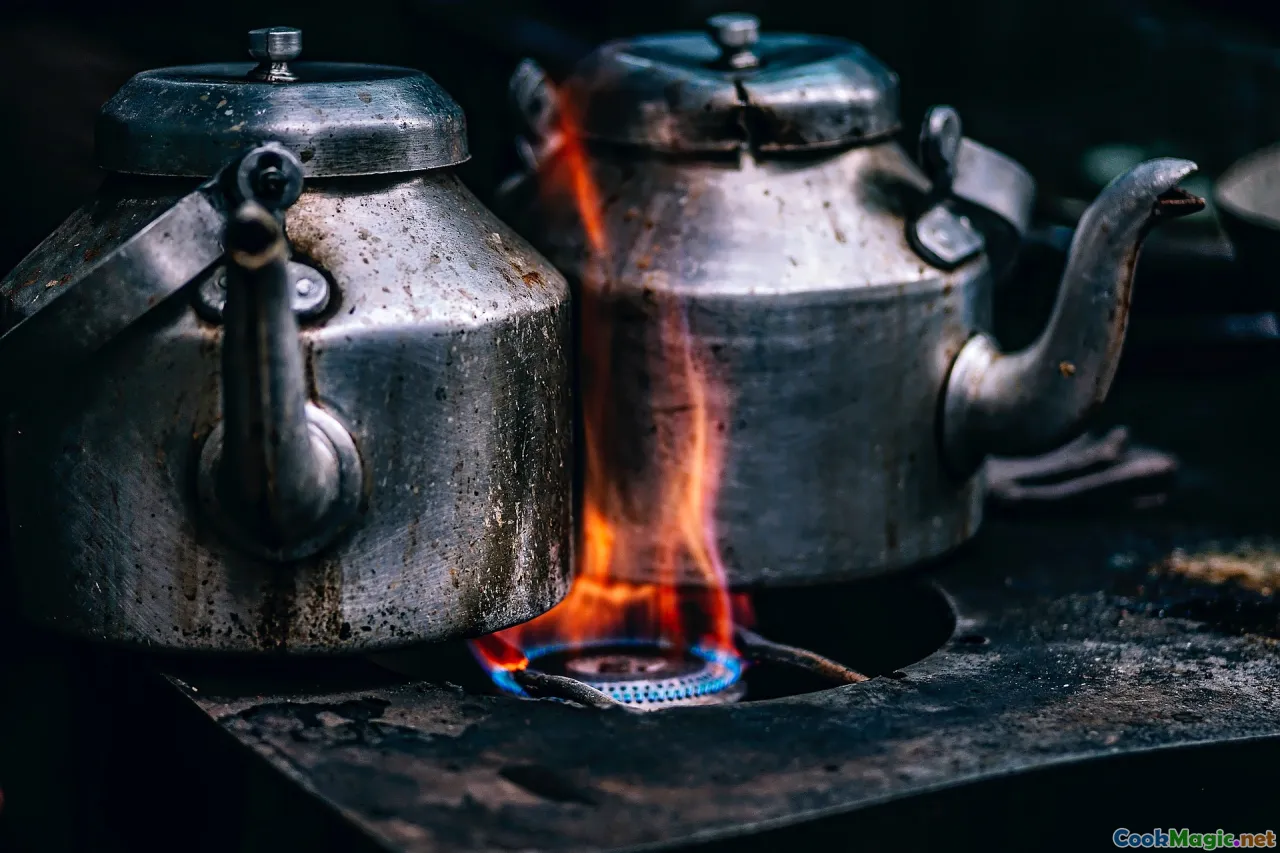
- Keep a whole hot pepper floating; puncture only if you know your diners. The pepper perfumes more than it burns when left intact. -> - 매운 고추를 통째로 뜨게 두세요; 식자의 취향을 알 때만 구멍을 뚫으세요. 고추는 그대로 두면 향이 더 강하다.
- If your first press tastes dull, you may have over-watered. Grate finer, press harder, and use warmer water for the second batch. -> - 첫 압착의 맛이 밋밋하면 물을 너무 많이 넣었을 수 있다. 곱게 갈고 더 세게 누르며 두 번째 배치를 위해 더 따뜻한 물을 사용하라.
- Do not crowd the pot with fish. Give each piece space so the stew does not drop in temperature and the emulsion stays steady. -> - 냄비에 생선을 너무 많이 담지 마라. 각 조각이 공간을 갖도록 하여 스튜의 온도가 떨어지지 않게 하고 에멀전도 안정되게 하라.
- If your coconut milk breaks, turn off the heat and let it settle. Stir in a little starch slurry, then warm gently without boiling. -> - 코코넛 밀크가 분리되면 불을 끄고 가라앉히라. 전분 슬러리를 조금 저어 넣고 끓이지 말고 천천히 데워라.
- Use culantro over cilantro whenever possible. If you cannot find it, combine cilantro with a small number of chopped celery leaves and a scrap of serrano to approximate the depth. -> - 가능하면 cilantro 대신 culantro를 사용하라. 찾지 못하면 고수와 샐러리 잎 조금, 세라노 칠리 조각을 섞어 깊이를 흉내 내라.
- When pounding hudut, oil your pestle or masher lightly with coconut oil to keep stickiness at bay. -> - hudut를 두드릴 때 절구나 으깨개를 코코넛 오일로 가볍게 바르면 끈적임을 줄일 수 있다.
- For tapado, slice ripe plantain on the bias so pieces do not collapse. Green plantain can be chunked; ripe plantain prefers wide coins. -> - Tapado의 경우 익은 플랜테인을 비스듬하게 썰어 조각이 무너지지 않도록 하라. 초록 플랜테인은 덩어리로, 익은 플랜테인은 넓은 동전 모양으로 자르는 것이 좋다.
- Never throw away coconut water without tasting. If it is sweet and clean, it belongs in the first press. -> - 코코넛 물은 맛보기 전까지 절대 버리지 마라. 달콤하고 깨끗하면 그것은 첫 압착에 들어가야 한다.
Ingredient Notes and Substitutions

- Culantro: Long, sawtooth leaves with a concentrated, slightly bitter herbaceousness. It stands up to coconut milk and fish. Sub with a mix of cilantro and a leaf or two of epazote if you must, but use a lighter hand. -> - 쿠란트로: 길고 톱니 모양의 잎으로 농축된 약간 쓴 허브 향이 있다. 코코넛 밀크와 생선을 잘 견딘다. 필요하다면 고수와 에파조테 잎 몇 장으로 대체하되 손을 가볍게 쓰라.
- Habanero or scotch bonnet: The citrusy aroma is essential. Use whole for perfume, sliced for heat. Aji dulce can bring similar fragrance without the burn. -> - 하바네로나 Scotch bonnet: 시트러스 향이 필수다. 향을 원하면 통째로 사용하고, 매운맛을 넣고 싶으면 얇게 썬다. Aji dulce는 매운 느낌 없이도 비슷한 향을 낼 수 있다.
- Fish: Firm, locally caught fish is ideal. Frozen works if that is what you have. Smoked fish should be clean and not acrid. If smoke flavor is missing, a pinch of smoked paprika can whisper at it without taking over. -> - 생선: 단단하고 현지에서 잡은 것이 이상적이다. 없으면 냉동도 가능하다. 훈제 생선은 깨끗하고 자극적이지 않아야 한다. 훈연 향이 부족하면 훈제 파프리카를 소량으로 사용해 은근히 더하되 맛을 지배하지 않게 하라.
- Achiote: In oil or ground, it adds color more than flavor. Bloom in a spoon of oil and drizzle at the end for a sunset hue. -> - 아치오트: 기름에 녹이거나 가루 형태로 사용해 색을 더하지만 맛은 크게 바꾸지 않는다. 기름 한 스푼에 불리고 끝에 뿌려 노을빛 색을 준다.
- Plantains and green bananas: Green for starch, ripe for sweetness and perfume. In a pinch, yuca or breadfruit can fill the starchy role, though they change the bite. -> - 플랜테인과 초록 바나나: 초록은 전분, 잘 익은 것은 단맛과 향을 준다. 급할 때는 야카나 breadfruit로 전분 역할을 채워도 되지만 식감은 달라진다.
- Coconut: Mature brown coconuts yield the richest milk. Young green coconuts offer sweet water but the meat is jelly-soft and not for grating. -> - 코코넛: 잘 익은 갈색 코코넛은 가장 풍부한 밀크를 준다. 어린 초록 코코넛은 달콤한 물을 주지만 과육은 젤리처럼 부드러워 갈기에 적합하지 않다.
Sourcing matters. In villages along the coast, coconuts are habitual — you know which trees drop the fattest nuts in late summer and which ones hide crabs at their roots. In cities, your market becomes the grove. Choose heavy nuts and sellers who let you tap and listen. -> 공급원이 중요하다. 해안가 마을에서는 코코넛이 일상화되어 있어, 여름 말에 가장 큰 견과를 떨어뜨리는 나무와 뿌리에서 게를 숨기는 나무를 안다. 도시에서는 시장이 숲이 된다. 무거운 코코넛을 고르고 두드리고 소리를 들려주는 판매자를 선택하라.
Cooking for a Crowd, Cooking for a Ceremony

Coconut milk deepens its meaning when the pot gets big. -> 냄비가 커질수록 코코넛 밀크의 의미가 깊어진다. On feast days, in wakes and nine-nights, and during ceremonies held in the dabuyaba — the Garifuna temple — food arrives in quantities that speak of care. -> 축제일과 애도 의식, 다부야바(가리푸나 사원)에서의 의식이 열릴 때 음식은 보살핌의 양으로 들려온다. Outsiders may never see the most sacred gatherings, and should not intrude, but the public feasts around holidays present a table that tells a story: trays of cassava bread fanned like scales, vats of sere, bowls of hudut stacked in a pyramid, spoons tapping rims as if keeping time with the drummers. -> 외부인은 가장 신성한 모임을 보기 어렵고 간섭하지 말아야 하지만 휴일의 공공 만찬은 한 편의 이야기를 들려주는 표를 만든다: 비늘처럼 펼친 카사바 빵의 쟁반, sere의 대형 솥, 피라미드처럼 쌓인 hudut 그릇, 드럼의 박자에 맞추듯 가장자리를 두드리는 숟가락.
Cooking at this scale is its own craft. The second press becomes a bucket, the first press a guarded treasure added by the oldest hands. Fires are banked to keep heat even. Fish goes in by weight and feel, not recipe. Younger cooks learn to read the surface of a pot from half a room away. I have watched a woman adjust a flame after a single bubble rose too aggressively, her fingers barely making a gesture. That is coconut milk’s role too — a teacher of attentiveness. -> 이 규모의 요리는 자체적인 기술이다. 두 번째 압착은 버킷이 되고, 첫 번째 압착은 가장 오래된 사람들이 지켜 온 보물처럼 더해진다. 불은 열이 고르게 유지되도록 다루어진다. 생선은 무게와 촉감으로 넣으며, 레시피가 아니다. 젊은 요리사들은 반 방 거리에서 냄비의 표면을 읽는 법을 배운다. 나는 거품이 과도하게 올라온 뒤 불꽃을 다듬는 여성을 보았고, 그녀의 손가락은 거의 제스처를 보이지 않았다. 그것도 코코넛 밀크의 역할이다 — 집중력을 가르치는 스승이다.
And then there is the eating: a whole community wrapped in the same perfume, lips glossed with the same sheen, sharing the same bowl. When food tastes like belonging, coconut milk is often the chorus line. -> 그리고 식사가 있다: 같은 향기에 싸인 전체 공동체, 같은 광택으로 빛나는 입술, 같은 그릇을 함께 나눈다. 음식이 소속감을 주게 되면, 코코넛 밀크는 그 노래의 후렴구가 된다.
The sea of Central America gives and takes. It gave coconuts to Garifuna kitchens, and the cooks turned that gift into a language of richness, patience, and balance. In sere and hudut, in bundiga and tapado, in rice and beans that steam like an afternoon cloudburst, coconut milk shows what it means to hold fast to a place and to each other. If you cook it gently, it will tell you a story. If you serve it generously, it will tell that story to everyone at your table. -> 중앙아메리카의 바다는 주고 받는다. 바다는 가리푸나 주방에 코코넛을 주었고, 요리사들은 그 선물을 풍요로움, 인내, 균형의 언어로 바꾸었다. sere와 hudut, bundiga와 tapado, 오후의 비구름처럼 증기로 오르는 쌀과 콩 속에서 코코넛 밀크는 한 곳과 서로를 굳건히 지키는 것이 무엇을 뜻하는지 보여준다. 천천히 요리하면 이야기를 들려줄 것이고, 너그러이 내면 그 이야기를 식탁의 모두에게 들려줄 것이다.









